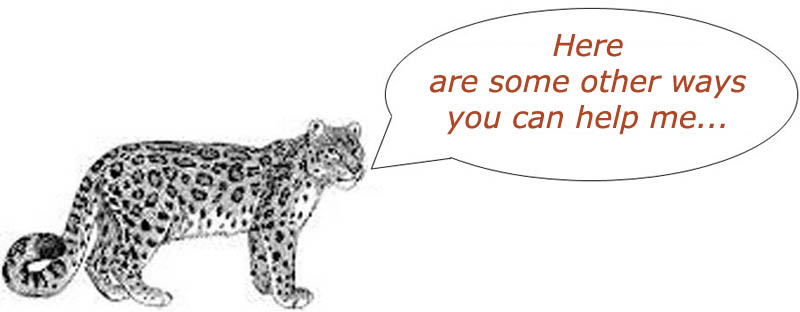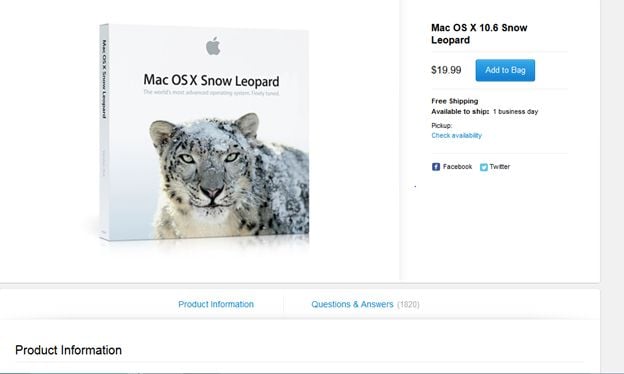- Installing OS X Snow Leopard. To install OS X Snow Leopard from the USB drive, you'll need to reformat the Mac's hard drive. To do this, look towards the top of the screen and click on Utilities from the top menu and then click Disk Utility from the drop-down menu. Formatting the Mac's hard drive using Disk Utility. Formatting The Mac's Hard Drive.
- Find the upgrade directions here: 1. Double click on the.dmg file to mount it. The.pkg file may will open very slowly in Snow Leopard. Be patient and wait a long time.
- Snow Leopard Upgrade To Mavericks
- Mac Os X Snow Leopard Upgrade
- Buy Snow Leopard Upgrade
- Snow Leopard Upgrade
Snow Leopard is the gateway to update your Mac to a newer operating system via Apple Purchases. Having seen the negative reviews, I thought I'd give it a go and see what happens. Nothing to lose. Well, imagine my surprise when I copied the iso to a USB stick, stuck it into my 2008 MacBook Pro and it worked beautifully.
Snow Leopard is fondly remembered by many longtime Mac users, both because it was a remarkably refined release and because it was the last version produced before Apple really started porting iOS features over to the Mac. Five new versions of OS X have been released since then, but NetApplications data says that some five percent of the total Mac userbase continues to soldier on with version 10.6.

Snow Leopard Upgrade To Mavericks
Some of those people will be using Macs that aren't compatible with newer versions of OS X, and others will be sticking around because of their personal preferences (or spite, or stubbornness). Either way, if you're still running 10.6, fire up your software updaters for the first time in years because Apple has just issued a small update to 'ensure future compatibility with the Mac App Store.'
This doesn't mean that Snow Leopard is suddenly supported again. Rather, it allows Apple to continue offering modern OS X versions to the Snow Leopard users whose Macs can run newer versions. You can upgrade directly from Snow Leopard to any newer version of OS X, including the current El Capitan, and the Mac App Store is the main delivery method for those upgrades.

If you can upgrade and you don't have some niche piece of software or hardware that won't work under newer OS X versions, at this point you probably should. Applications are leaving 10.6 behind and the platform hasn't received a security update in well over two years. It's time.
To get the latest features and maintain the security, stability, compatibility, and performance of your Mac, it's important to keep your software up to date. Apple recommends that you always use the latest macOS that is compatible with your Mac.
Learn how to upgrade to macOS Big Sur, the latest version of macOS.
Check compatibility
Mac Os X Snow Leopard Upgrade
If a macOS installer can't be used on your Mac, the installer will let you know. For example, it might say that it's too old to be opened on this version of macOS, or that your Mac doesn't have enough free storage space for the installation.
To confirm compatibility before downloading, check the minimum requirements for macOS Catalina, Mojave, High Sierra, Sierra, El Capitan, or Yosemite. You can also find compatibility information on the product-ID page for MacBook Pro, MacBook Air, MacBook, iMac, Mac mini, or Mac Pro.
Make a backup

Before installing, it’s a good idea to back up your Mac. Time Machine makes it simple, and other backup methods are also available. Learn how to back up your Mac.
Download macOS

It takes time to download and install macOS, so make sure that you're plugged into AC power and have a reliable internet connection.
Safari uses these links to find the old installers in the App Store. After downloading from the App Store, the installer opens automatically.
- macOS Catalina 10.15 can upgrade Mojave, High Sierra, Sierra, El Capitan, Yosemite, Mavericks
- macOS Mojave 10.14 can upgrade High Sierra, Sierra, El Capitan, Yosemite, Mavericks, Mountain Lion
- macOS High Sierra 10.13 can upgrade Sierra, El Capitan, Yosemite, Mavericks, Mountain Lion
Safari downloads the following older installers as a disk image named InstallOS.dmg or InstallMacOSX.dmg. Open the disk image, then open the .pkg installer inside the disk image. It installs an app named Install [Version Name]. Open that app from your Applications folder to begin installing the operating system.
- macOS Sierra 10.12 can upgrade El Capitan, Yosemite, Mavericks, Mountain Lion, or Lion
- OS X El Capitan 10.11 can upgrade Yosemite, Mavericks, Mountain Lion, Lion, or Snow Leopard
- OS X Yosemite 10.10can upgrade Mavericks, Mountain Lion, Lion, or Snow Leopard
Install macOS
Follow the onscreen instructions in the installer. It might be easiest to begin installation in the evening so that it can complete overnight, if needed.
If the installer asks for permission to install a helper tool, enter the administrator name and password that you use to log in to your Mac, then click Add Helper.
Buy Snow Leopard Upgrade
Please allow installation to complete without putting your Mac to sleep or closing its lid. Your Mac might restart, show a progress bar, or show a blank screen several times as it installs macOS and related firmware updates.
Learn more
Snow Leopard Upgrade
You might also be able to use macOS Recovery to reinstall the macOS you're using now, upgrade to the latest compatible macOS, or install the macOS that came with your Mac.
